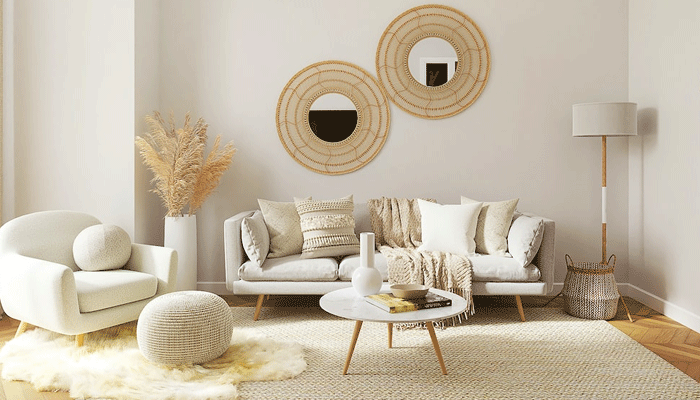Buying a bed for your kids is an important decision, but it can often be a difficult one. With so many different styles and sizes of bunk beds available, it can be hard to decide which one to choose for your children. To make the process easier, here are some essential tips for selecting the right bunk beds for your kids. We’ll look at the size of the bed, features to consider, and safety precautions so you can shop with confidence knowing you’re making an informed and safe choice. Read on to find out more!
How to choose the right bunk bed for your kids
There are a few things to keep in mind when selecting bunk beds for your children. First, consider the age of your children and choose a bed that will be appropriate for their age group. Second, think about how much space you have available in your home for the bunk bed. Third, consider the safety of the bunk bed and make sure it meets all safety standards. Finally, pick a style of bunk bed that you know your children will love!
The different types of bunk beds
Bunk beds come in a variety of shapes and sizes, so it’s important to choose the right one for your child’s needs. The most common type of bunk bed is the twin-over-twin, which is perfect for siblings who share a room. If your child is taller than average, you may want to consider a full-over-full bunk bed, which offers more sleeping space.
Loft beds are another popular option for kids’ bedrooms, as they provide a play area beneath the mattress. Some loft beds even come with storage drawers or a desk built in, making them perfect for small spaces.
Finally, if you have two children of different ages sharing a room, a bunk bed with a trundle bed underneath is a great solution. This way, your older child can sleep on the top bunk while your younger child has a place to sleep downstairs.
Pros and cons of bunk beds
Bunk beds are a great option for kids who share a bedroom. They can help save space and make the room feel more fun and playful. But there are also some potential downsides to bunk beds that parents should be aware of before making a purchase.
Pros:
1. Bunk beds can help save space in a small bedroom.
2. They can make the room feel more fun and playful for kids.
3. Bunk beds can be a great option for sleepovers or hosting guests.
Cons:
1. Bunk beds can be dangerous if not used properly. There have been reports of children falling out of bunk beds and getting injured.
2. Bunk beds can also be noisy, creaking as kids climb up and down them during the night. This can disrupt a child’s sleep and make it difficult for them to get restful sleep.
3. Some parents find it difficult to make bunk beds look good in their child’s room, as they can be bulky and take up a lot of space
How to make bunk beds safe for your kids
If you’re considering bunk beds for kids, safety is likely top of mind. Here are a few tips to help make sure your bunk beds are safe for your little ones:
1. Choose a bunk bed with a sturdy frame. Look for one that’s made from solid wood or metal – avoid any that are made from particle board or plastic as they’re more likely to break or collapse.
2. Make sure the mattress is the right size. Bunk beds often come with mattresses that are too small – be sure to measure the mattress and get one that’s at least 6 inches longer and 2 inches wider than your child so they have enough room to move around and stay comfortable.
3. Check the weight limit. Most bunk beds have a weight limit of 200 pounds – be sure to check this before you buy to make sure it will accommodate both of your children (if they’re close in age and size, you may need to look for a bed with a higher weight limit).
4. Add guardrails. If your bunk bed doesn’t come with built-in guardrails, be sure to add them yourself. They should extend at least 5 inches above the mattress so your child can’t roll out during sleep.
5. Don’t use top bunks for young children. If you have young children, it’s best to stick with bottom bunks only until they’re old enough (usually around 6 years old) to safely
Bunk bed safety tips
Bunk beds are a great option for kids who share a room, but they can also be dangerous if they’re not used properly. Here are some tips to keep your kids safe when using bunk beds:
– Make sure the beds are sturdy and well-built. Cheaply made bunk beds can collapse, injuring your child.
– Don’t let your child climb on the top bunk without supervision. They could fall and hurt themselves.
– Teach your child how to properly use the ladder to get in and out of the top bunk.
– Keep the area around the bunk beds clear of clutter so your child doesn’t trip and fall.
By following these safety tips, you can help ensure that your child has a safe and enjoyable experience with their bunk bed.
Alternatives to bunk beds
There are a few alternatives to bunk beds that you may want to consider for your kids. One option is to get two twin beds and place them side-by-side. This way, your kids will still have their own bed, but they can sleep next to each other and have easy access to one another.
Another option is to get a loft bed furniture. This type of bed has the mattress on the top level and there is usually space underneath for a desk, toy storage, or even another bed. This can be a great option if you have limited space in your child’s bedroom.
The last alternative is to get a daybed. Daybeds can be used as both a seating area during the day and a bed at night. This can be a great option if you have an extra room in your house that you can use for your kids to sleep in during the weekdays.





